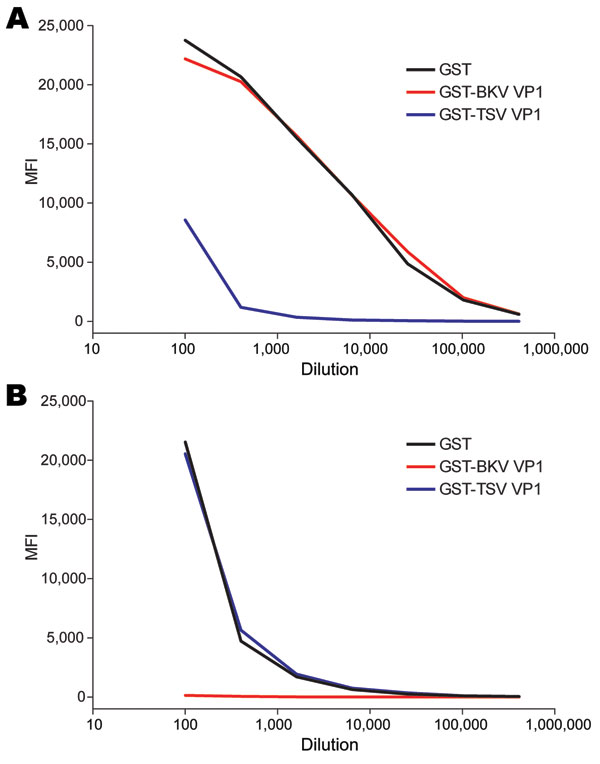Volume 17, Number 8—August 2011
Research
Seroprevalence of Trichodysplasia Spinulosa–associated Polyomavirus
Figure 5

Figure 5. Seroresponses against trichodysplasia spinulosa–associated polyomavirus (TSV) (A) and BKV polyomavirus (B) for a patient with trichodysplasia spinulosa, the Netherlands. Serial dilutions of serum from a TS patient were tested for reactivity against TSV viral protein 1 (VP1) or BKV VP1 by using the VP1 multiplex antibody-binding assay. Samples were preincubated with soluble recombinant glutathione-S-transferase (GST) (black line), GST-BKV VP1 (red line), or GST-TSV VP1 (blue line). MFI, median fluorescent intensity.
Page created: August 15, 2011
Page updated: August 15, 2011
Page reviewed: August 15, 2011
The conclusions, findings, and opinions expressed by authors contributing to this journal do not necessarily reflect the official position of the U.S. Department of Health and Human Services, the Public Health Service, the Centers for Disease Control and Prevention, or the authors' affiliated institutions. Use of trade names is for identification only and does not imply endorsement by any of the groups named above.